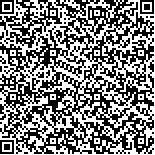下载中心
优秀审稿专家
优秀论文
相关链接
摘要

2. 北京师范大学 遥感科学与工程研究院, 北京 100875;3.
3. 北京师范大学 地理科学学部, 北京 100875
SVM分类器的参数设定对分类精度有着显著的影响,针对现有人工智能算法优化参数易陷入局部最优的现状,提出了一种基于人工蜂群算法改进SVM参数的遥感分类方法(ABC-SVM)。该方法模仿蜜蜂采蜜的行为,以训练样本的交叉验证精度代表蜜源的丰富程度,通过蜂群的分工协作搜索出最优蜜源(即SVM分类器最优参数),最终利用参数优化后的SVM分类器实现遥感影像的分类。本文先后比较了3种人工智能算法(包括人工蜂群算法优化的SVM(ABC-SVM)、遗传算法GA(Genetic Algorithm)优化的SVM(GA-SVM)、粒子群算法PSO(Practical Swarm Optimization)优化的SVM(PSO-SVM))在UCI标准数据集上的分类精度和效率,以及3种人工智能算法优化的SVM算法与未经优化参数的SVM算法在遥感影像上分类的差异。结果显示:(1)在利用UCI数据集测试3种人工智能算法优化的SVM算法的结果中,ABC-SVM显示出更高的分类精度、更高的适应度和更快的收敛速度;(2)在利用遥感影像验证4种分类算法精度的结果中,人工智能算法优化后的SVM比未经参数优化的SVM算法的分类精度更高;其中,ABC-SVM分类精度最高,分别比遗传算法、粒子群算法的结果高1.67%、1.50%。
In the applications of a Support Vector Machine (SVM) classifier in solving classification problems, setting model parameters significantly influence the classification result, which causes a necessity for optimizing the key factors (cost and kernel parameters) in the SVM classifier to obtain the optimal classification results. Artificial Intelligence (AI) methods, which provide solutions for the parameter optimization problem of the SVM classifier, have emerged in recent years with the rapid advancement of the AI technology. However, these methods can easily trap the local optimal solution during the optimization process. An Artificial Bee Colony (ABC) algorithm exerts advantages, such as fast convergence and uneasiness of falling into a local optimum. Therefore, this study is aimed at introducing the ABC algorithm into optimizing the key parameters of the SVM classifier, thereby attempting to achieve a high precision in remote sensing image classification.
The ABC algorithm imitates the behavior of honey bees in searching for the optimal parameters (also referred as the nectar) in the SVM classifier. The quality of the parameters is continuously validated using a threefold cross-validation accuracy of the training samples until The quality of parameters reaches the maximum accuracy. Then, the SVM with the optimized parameters are applied to classify the remote sensing images.
First, three types of SVM classifier, namely, SVM optimized by an ABC algorithm (ABC-SVM), SVM optimized by a genetic algorithm (GA-SVM), and SVM optimized by a particle swarm algorithm (PSO-SVM), were compared when classifying five standard UCI datasets to verify the classification accuracy and efficiency of the ABC-SVM. The operation efficiency of the three AI algorithms was compared in the classification experiment based on the same UCI dataset, during which the training time and convergence curve of the three algorithms were recorded. Results showed that the ABC-SVM method has the highest classification accuracy, which is 6.55% and 6.07% higher than that of the GA-SVM and PSO-SVM algorithms, respectively. In terms of the efficiency of the three AI algorithms, the GA-SVM and PSO-SVM undergo minimal training time in the classification experiments of the five datasets. However, their global searching capability is inefficient, and the convergence rates are slow. The ABC-SVM undergoes the longest operation time among the three AI algorithms, but its fitness value is the highest and the convergence rate the fastest. Then, classification accuracies were evaluated based on a remote sensing image in the test area (Landsat-8 OLI image in Huairou area, Beijing), in which the SVMs were optimized by the three AI algorithms, and the original SVMs were compared. Results showed that the ABC-SVM method has the highest classification accuracy, which is 10.50% higher than that of the original SVM classification algorithm and is 1.67% and 1.50% higher than those of the other two AI algorithms (GA-SVM and PSO-SVM, correspondingly).
The conclusions are listed as follows:(1) The ABC-SVM shows the highest classification accuracy among the results of the three types of AI optimized using the SVM algorithm when classifying the UCI datasets. The average classification accuracy of the five datasets is 6.55% and 6.07% higher than that of the GA-SVM and PSO-SVM, respectively. In addition, ABC-SVM has the fastest convergence among the three AI methods and shows a complex trapping local optimum. (2) The results of using the remote sensing image to verify the accuracy of the four classification algorithms show that the average accuracy of the SVM optimized by the three AI algorithms is 9.45% higher than the original SVM algorithm. Among these AI algorithms, the classification accuracy is 1. 67% and 1.50% higher in the ABC-SVM than in the GA-SVM and PSO-SVM, respectively.

